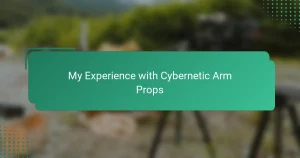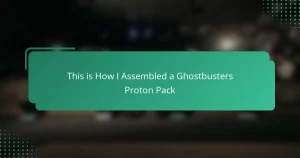Key takeaways
- Understanding LED technology is essential for cosplay, focusing on voltage and current control to avoid flickering and dimming.
- Choosing durable and energy-efficient LEDs enhances props’ performance and prolongs battery life during events.
- Proper integration and secure wiring of LEDs within costumes is crucial for functionality and aesthetics.
- Sharing experiences and troubleshooting tips with the cosplay community fosters growth and innovation in LED lighting setups.
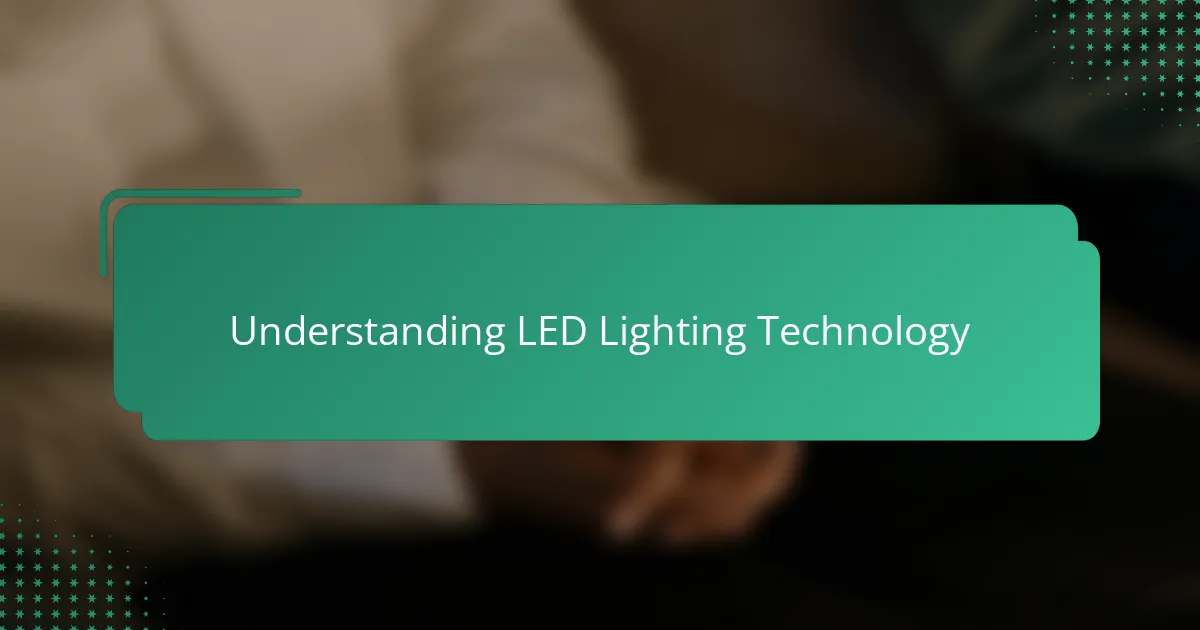
Understanding LED Lighting Technology
When I first started exploring LED lighting for cosplay, I was fascinated by how these tiny diodes could emit such vibrant colors with minimal power. LEDs work by passing an electric current through a semiconductor, which then releases light. It’s a simple process, but understanding this made me appreciate the tech behind the glow in my props.
I remember questioning why my LED strips sometimes flickered or dimmed unexpectedly. It turned out that voltage and current control play a crucial role in consistent lighting performance. Without the proper resistors or power supply, even the best LEDs won’t shine their brightest—something I learned the hard way during a convention prep.
Have you ever wondered why LEDs don’t get as hot as traditional bulbs? That’s because LEDs convert most of their energy directly into light rather than heat. This not only makes them safer for wearable props but also means I could design my costumes with intricate lighting details without worrying about burning wires or uncomfortable heat build-up.
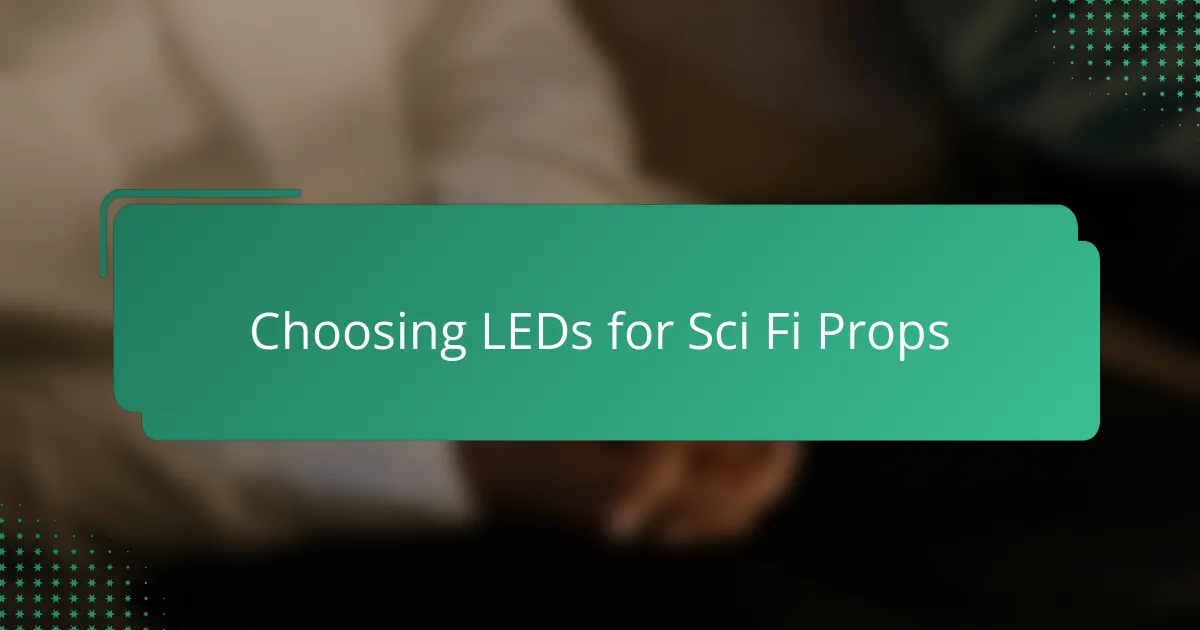
Choosing LEDs for Sci Fi Props
Choosing the right LEDs for sci-fi props can be surprisingly tricky. At first, I thought brighter meant better, but I quickly learned that size and color temperature matter just as much. Have you ever struggled to find that perfect hue that matches your character’s vibe? I sure have, and it took testing several types before I finally nailed a cool blue that didn’t wash out under convention lights.
Another thing I realized is the importance of durability. Props get jostled around a lot, especially during crowded events. I made the mistake of using delicate LEDs early on, which led to some heartbreaking flickering mid-photoshoot. Now, I opt for sturdy, well-protected LEDs designed for rugged use—trust me, it’s worth the investment to avoid last-minute lighting failures.
I also found that thinking about power consumption upfront changes everything. Some LEDs look amazing but drain batteries quickly, turning your epic night into an early blackout. Choosing energy-efficient LEDs allowed me to extend battery life without sacrificing brightness, keeping my props glowing from the opening scene right through the encore. Have you balanced brightness and battery life yet? It’s an art worth mastering.

Designing LED Circuits for Cosplay
Designing LED circuits for cosplay became a mix of trial and error for me. Initially, I underestimated how important it was to match the right resistor with each LED to prevent burnout. Have you ever soldered what you thought was a foolproof connection, only to find your lights flickering? That frustration pushed me to learn more about the delicate balance of voltage and current.
One trick I discovered was wiring LEDs in parallel rather than series to maintain consistent brightness across multiple lights. It felt like solving a small puzzle every time I built a new circuit—each piece had to fit perfectly or the whole effect would falter. I still double-check my work because even a tiny slip can cause a prop that’s supposed to dazzle to look dim and lifeless.
Power supply choice also surprised me. I initially used standard batteries, thinking they’d do the job, but constant dimming made me switch to rechargeable Li-ion packs. The longer battery life and stable output made a world of difference, especially during long conventions. Don’t overlook how your power source impacts your entire setup—it’s the backbone of any good LED circuit in cosplay.
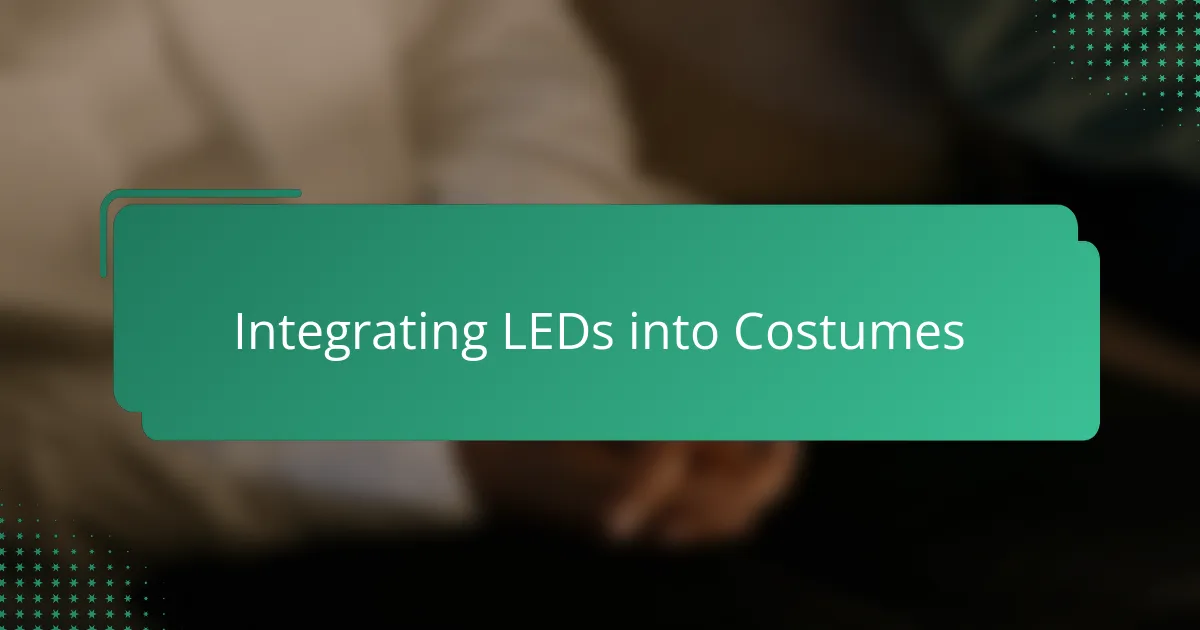
Integrating LEDs into Costumes
Integrating LEDs into costumes was a game-changer, but it wasn’t without its weird moments. I once tried sewing LED strips directly onto fabric, only to watch them stop working after a few moves—lesson learned: securing LEDs properly without stressing the wiring is just as critical as choosing the right lights. Have you ever had a costume malfunction because of loose connections? It’s frustrating but teaches you how much careful planning behind the scenes matters.
I also discovered that hiding the wiring neatly makes a huge difference in both comfort and appearance. Running thin wires along seams and using fabric channels helped me avoid that messy, tangled look that screams “amateur.” It took some patience, but seeing my costume light up smoothly without bulky battery packs poking out made the extra effort totally worth it.
Sometimes, finding the right balance between visibility and subtlety felt like an art form. I asked myself: should the LEDs glow boldly to catch every eye, or softly to enhance the character’s mystique? Tweaking brightness with dimmers became my secret trick to match the mood, and honestly, it made wearing the costume so much more enjoyable.
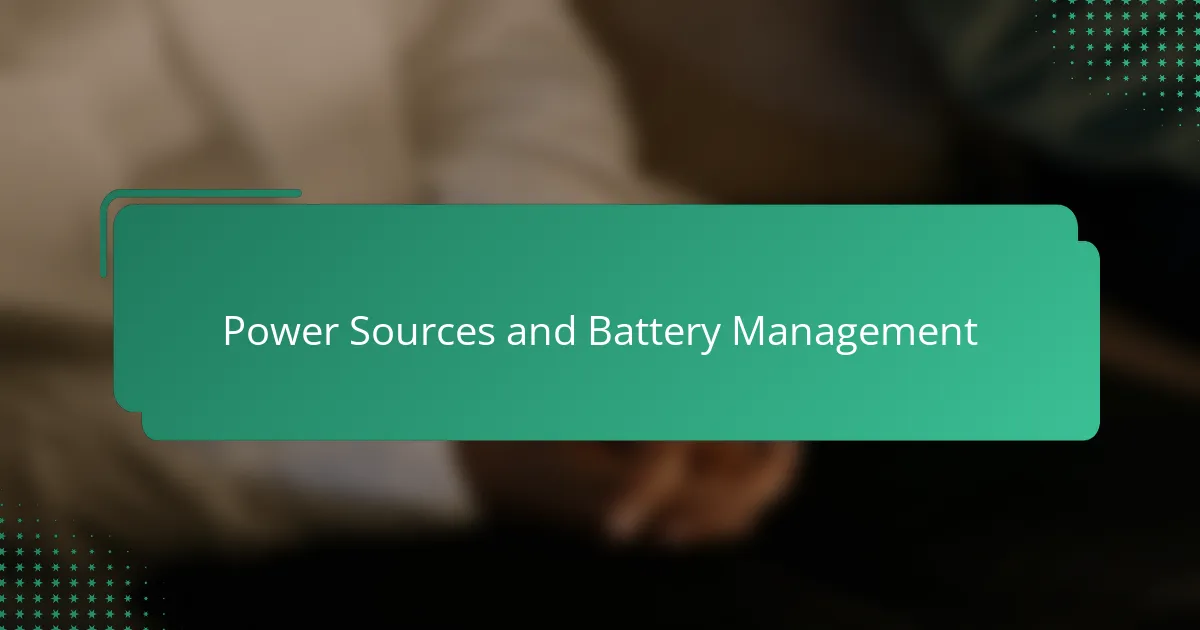
Power Sources and Battery Management
Managing power sources for my LED cosplay props quickly turned into a learning curve. At first, I just grabbed any batteries I had on hand, only to be frustrated when my lights dimmed halfway through a photoshoot. Have you ever faced that sinking feeling when your carefully crafted glow starts fading? Switching to rechargeable lithium-ion batteries was a revelation—they provide steady power and last much longer, which meant fewer interruptions and more confidence during events.
Battery placement also surprised me as a crucial factor. I used to tuck battery packs in awkward spots that made my costume bulky or uncomfortable. Finding balance between accessibility for quick changes and discreet integration made power management feel less like a compromise and more like a feature. From my experience, designing small, lightweight battery holders helped me keep everything running smoothly without sacrificing comfort.
And then there’s the whole issue of managing battery life during long conventions. I started carrying spare batteries and a compact charger, just in case the unexpected happened. Planning for power backup isn’t something I considered initially, but now I treat it like a safety net—because nothing kills the vibe faster than a dark, lifeless prop in the middle of a bustling sci-fi gathering. Do you plan for power emergencies when you cosplay? Trust me, it’s worth the peace of mind.
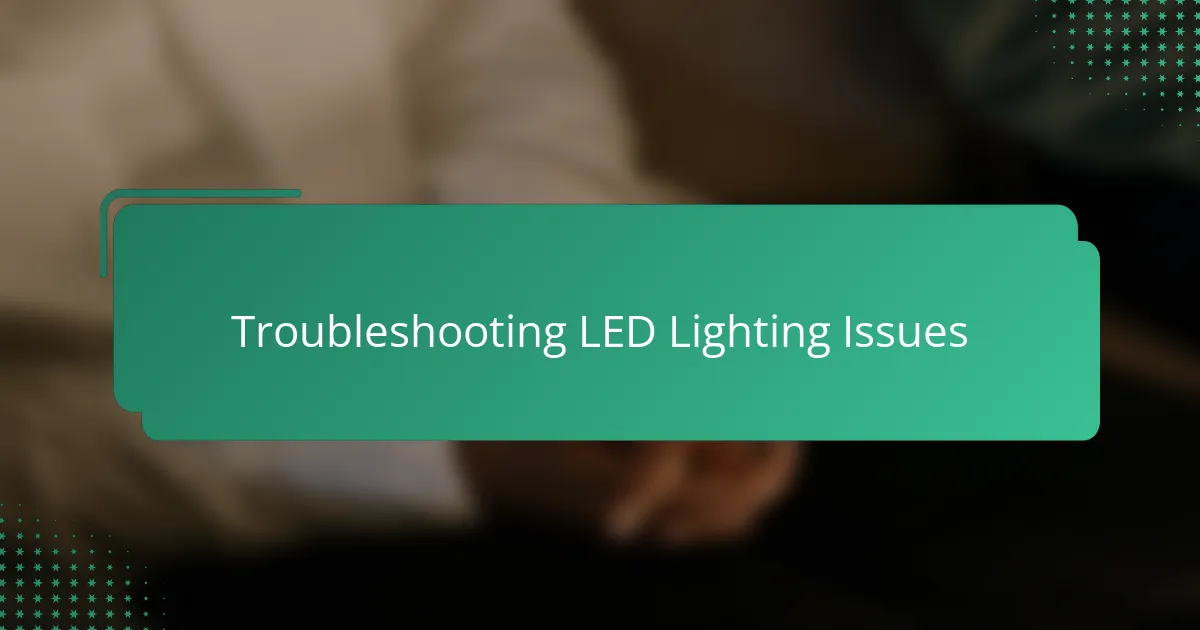
Troubleshooting LED Lighting Issues
One of the trickiest issues I faced was flickering LEDs that just wouldn’t behave. After some head-scratching moments, I realized loose connections or cold solder joints were often the culprits. Have you ever had a prop light up perfectly one minute, then start flickering right before you step onto the convention floor? It’s frustrating, but carefully reflowing solder or checking wire tightness usually brought those stubborn lights back to life.
Another challenge was unexpected dimming during long wear. At first, I blamed faulty LEDs, but then I discovered it was voltage drop caused by long wiring runs or insufficient power supply. I started measuring voltage regularly and adding thicker gauge wires where needed, which made a noticeable difference. If you haven’t checked your power lines for drops, it might be the hidden reason your LEDs aren’t shining as bright as they should.
Finally, heat buildup caught me off guard once. Even though LEDs run cooler than traditional bulbs, cramped spaces inside costumes can still trap heat and cause intermittent failures. I ended up adding tiny vents or repositioning components to improve airflow. Have you ever thought about how heat affects your LEDs over hours of use? From my experience, a little ventilation can save you from unexpected blackouts during those crucial cosplay moments.
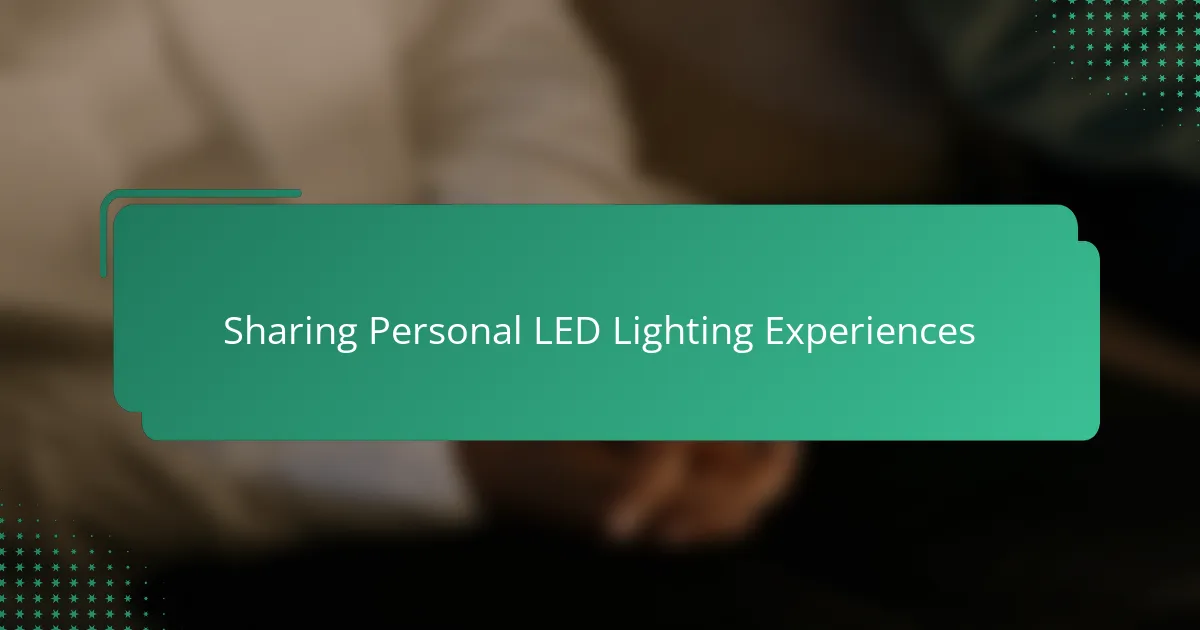
Sharing Personal LED Lighting Experiences
When I first started sharing my LED lighting setups with other cosplayers, I was surprised at how many people resonated with the same struggles—battling flickers or hunting down the perfect glow. It made me realize that these little challenges are part of the journey, not just something to overcome but to bond over. Have you ever felt that rush when someone recognizes the effort behind your glowing prop? It’s a connection that goes beyond the costume.
I recall at one convention, a fellow cosplayer stopped me to ask about my wiring tricks after admiring my seamless LED integration. Sharing those tips felt rewarding because lighting can seem so technical and intimidating at first. Do you find that talking through your lighting setup helps you troubleshoot or sparks new ideas? In my experience, exchanging stories and solutions makes the whole process less daunting and more inspiring.
Sometimes, sharing what didn’t work was just as valuable as showing off success. Like the time my entire LED array died because I overlooked a faulty solder joint—it was embarrassing but also a great lesson to pass on. Opening up about these mishaps creates a space where learning feels casual and supportive. Have you ever found that your “failures” ended up helping others avoid the same pitfalls? That shared growth makes the cosplay community truly shine.
